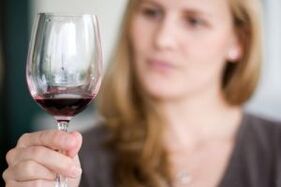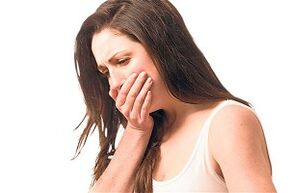What happens if you miss a glass or two of alcohol after taking an antibiotic pill? When can you drink alcohol, how many hours or days after taking antibiotics can you drink alcohol so as not to harm your health?
Antibiotics and alcohol
A mandatory consequence of the use of alcohol and antibiotics is a decrease in the effectiveness of treatment. When alcohol is consumed, inflammatory processes develop in the intestines and local immunity is reduced.
At the same time, the antibiotic-related disorder in the gut is exacerbated by the intake of the antibiotic.
Violation of drug concentration

The antibiotic begins to work once it reaches a sufficiently high therapeutic concentration in the blood. Consumption of the same alcoholic beverage reduces the amount of the drug in the body.
Such drugs, when trying to take antibiotics after alcohol, can be considered meaningless and even dangerous.
Violation of the treatment regimen and a decrease in the concentration of the drug contribute to the increase of the resistance of the pathogenic microflora to the effect of the antibiotic. And the disease itself, for which antibiotics are prescribed, gets a chance from acute to chronic.
The concentration of the drug decreases due to the fact that the nephrotoxic metabolite of ethyl alcohol acetaldehyde interferes with the process of reabsorption of nutrients in the renal tubules.
The reabsorption of water also deteriorates, which increases the viscosity of the blood, and the concentration of the antibiotic in the blood can change in the most unpredictable way.
Metabolic characteristics
Antibiotics are drugs that are metabolized in the liver. Busy with the processing of ethyl alcohol, the liver does not have time to neutralize all possible products of intermediate drug metabolism.
In addition, ethanol can affect the activity of liver enzymes and may even react directly with the antibiotic or its metabolites. These properties are expressed differently by antibacterial drugs.
One of the most dangerous properties of the combination of drug and ethyl alcohol is the interaction of these compounds with the formation of a disulfiram-like reaction.
We figure out whether it is possible to drink alcohol, beer, antibiotics, after which alcohol consumption is not dangerous, and after that it is completely impossible.
Disulfiram-like reaction

The disulfiram reaction is used to encode alcoholism, with nausea, convulsions, coughing, vomiting, shortness of breath, and a drop in blood pressure.
A similar effect often occurs when taking medications with ethanol.
The following is a list of antibiotics that should not be taken after taking which antibiotics and for how long.
The consequences of taking ethanol during antibiotic treatment are dose-dependent.
When you can drink alcohol after taking tablets or antibiotic injections, these are calculated based on how long the antibiotic is eliminated from the body.
List of antibiotics
Do not drink with alcohol:
- nitroimidazoles - do not mix with alcohol for up to 48 hours (medicines give a disulfiram-like reaction);
- cephalosporins - the chemical structure of this group is similar in structure to a disulfiram molecule, resulting in a disulfiram-like reaction with ethyl alcohol. You can take alcohol every other day, in case of kidney failure the interval is extended;
- fluoroquinolones - synthetic antibiotics inhibit the nervous system and can cause coma. Take alcohol no earlier than 1, 5 days;
- tetracyclines - a high risk of damage to liver hepatocytes, excreted from the body for a long time. You can take alcohol after 3 days;
- aminoglycosides are ototoxic, nephrotoxic, drug side effects increase, drug toxicity increases. Take alcohol no earlier than 0, 5 months;
- lincosamides - the central nervous system and liver involved in the disulfiram reaction. You can drink alcohol 4 days after treatment;
- macrolides - the risk of cirrhosis of the liver is increased, especially when taking erythromycin, slowly excreted from the body. Alcohol is allowed after 3, 5 days;
- anti-tuberculosis drugs can cause drug-induced hepatitis with a fulminant course. Alcoholic beverages are forbidden!
The rate of removal of antibacterial drugs from different environments in the body varies. Thus, if aminoglycosides are removed from the blood of adults in an average of 2. 5 hours, this time can be up to 350 hours from the inner ear fluid.
Given the ototoxicity of aminoglycosides, it is easy to understand that alcohol consumption within 2 weeks of treatment can cause deafness.
Interaction
A disulfiram-like reaction develops in antibiotic treatment and alcohol consumption as it blocks the synthesis of enzymes that destroy the ethanol molecule into simple substances.
This results in an increase in the blood concentration of the degradation intermediate ethyl alcohol - acetaldehyde. The ethanol metabolite of acetaldehyde is more toxic than ethyl alcohol itself.
And the lack of liver enzymes that results from toxic effects on the liver reduces the synthesis of norepinephrine, making the symptoms of poisoning the next morning clearer and harder to tolerate.
Effects

The combination of low-dose alcohol and drug may not appear at all, but with high-dose alcohol, the side effects of both drugs and ethyl alcohol are exacerbated.
One of the most dangerous consequences of the combination of alcohol and antibiotic is the disulfiram-like reaction. The danger of this condition is that it is masked by alcohol poisoning and is not recognized by others as an alarm.
The disulfiram reaction is caused by an increase in the concentration of acetaldehyde in the blood and manifests itself in the following symptoms:
- palpitations;
- nausea, vomiting;
- tide, feeling of heat;
- dizziness;
- abdominal pain;
- sharp pressure drop.
If the patient's blood alcohol level is higher than 125 mg / 100 ml and the victim does not receive help in time, even a fatal outcome is possible.
How to combine
Certain drugs should not be combined with ethyl alcohol at all in any dose:
- nitroimidazoles;
- a group of cephalosporins;
- fluoroquinolones;
- aminoglycosides.
How many days after taking antibiotics can you drink alcohol, stop treatment for a while?
It is best not to combine antibiotics and alcohol at all and not to take ethanol during treatment. If for some reason this is impossible and you need to consume alcoholic beverages, you can use a special alcohol computer to calculate how long you should drink an antibiotic after alcohol.
The alcohol calculator takes into account a person’s weight, the amount and strength of the drink consumed. So for men weighing 70 kg, 100 g of vodka is completely eliminated from the body in 5, 8 hours, 200 g of beer in 1, 44 hours.
It should be noted that all of these calculations are approximate, and the actual rate of excretion from the body depends not only on the properties of these chemical compounds, but also on the condition of the kidneys, intestines, and liver.
Output
It should take 1 to 3, 5 to 5 days for the antibacterial drug to be completely removed from the body. The elimination time depends on the state of health, age, and the characteristics of human metabolism.
In most cases, alcohol consumption during antibiotic treatment weakens the effectiveness of the treatment, increases the side effects of the drug, triggers a disulfiram-like reaction, and has serious consequences.































